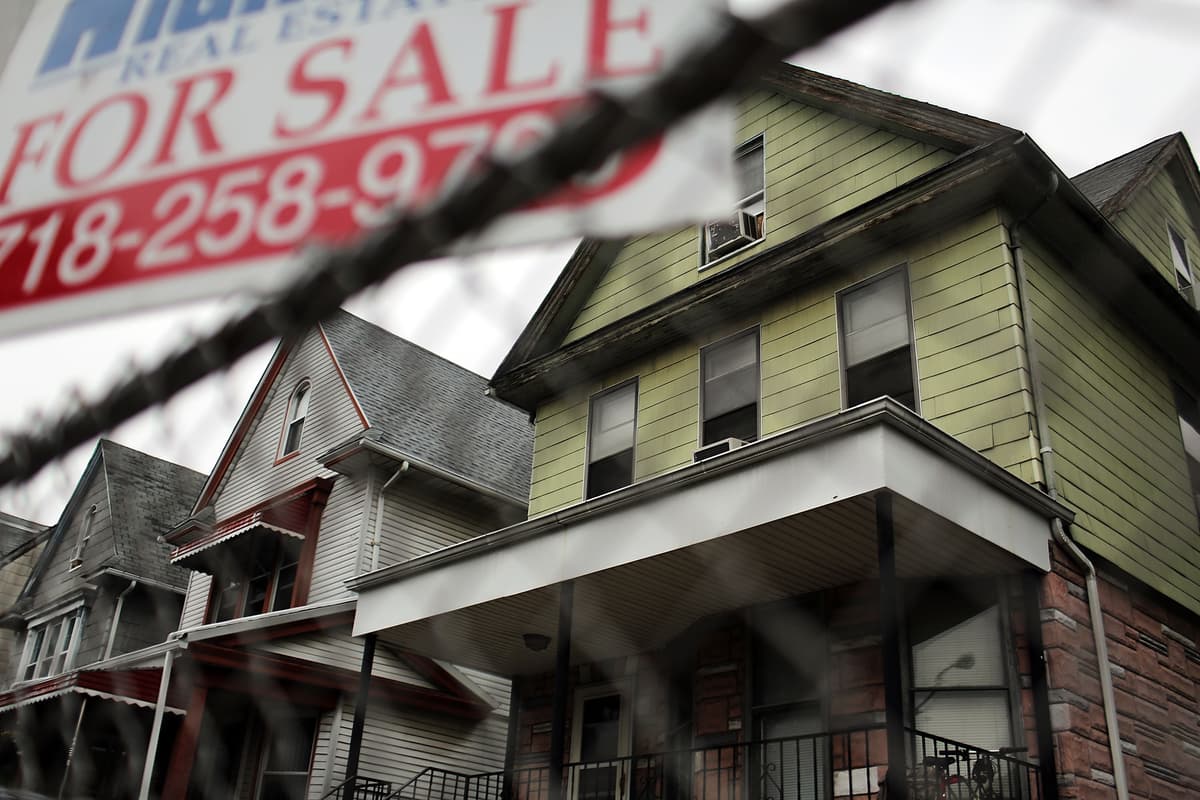Business
Trump’s 50-Year Mortgage Proposal Sparks Debate on Home Affordability

Homeownership in the United States is facing a significant crisis, prompting former President Donald Trump to propose a controversial solution. On a recent social media post, Trump suggested extending mortgage repayment terms from the standard 30 years to a staggering 50 years. While this idea aims to address the pressing issue of home affordability, critics argue that it is more of a distraction than a viable solution.
The notion of affordability in housing has gained traction in recent political discourse, especially following the recent elections where many Democratic candidates secured victories by appealing to this concern. The National Association of Realtors reports that the median age of a first-time homebuyer has now reached 40 years, a stark contrast to the median age of 28 years in 1991. This shift highlights a growing problem: younger generations are struggling to enter the housing market, affecting both their personal lives and political affiliations.
Data from the American National Election Studies reveals a notable trend in voter behavior. Renters now overwhelmingly lean towards Democratic candidates, with a nearly two-to-one preference, while homeowners are more likely to identify as Republican. This demographic shift indicates a potential pivot in political strategy, as homeownership becomes increasingly unattainable for many Americans.
In urban centers such as New York City, the situation is particularly dire. Even individuals earning upwards of $120,000 annually are finding it difficult to transition from renting to owning a home. Economic reporter John Carney notes that many young professionals are settling for cramped apartments and shared living situations, devoid of hope for homeownership. This demographic discontent was reflected in the strong backing for Democratic Socialist mayor-elect Zohran Mamdani from areas populated by these “downwardly mobile professionals.”
In response to election results that displayed widespread dissatisfaction, Trump proposed the 50-year mortgage. He drew parallels between his plan and the historical introduction of the 30-year mortgage during the Great Depression by President Franklin Delano Roosevelt. However, this proposal faces significant hurdles, including restrictions imposed by the Dodd-Frank Act. Critics argue that rather than focusing on extended mortgage terms, policymakers should consider more immediate solutions to make homeownership attainable.
One potential avenue for improvement lies in lowering mortgage rates. Many homeowners, particularly those in the older demographic, remain hesitant to sell their homes due to low interest rates on their current mortgages. This hesitance contributes to a stagnation in the market, keeping essential inventory unavailable for first-time buyers. Trump has urged Federal Reserve Chairman Jerome Powell to lower interest rates, which have seen cuts in September and October, with speculation of further adjustments in December.
The long-term solution to the housing crisis revolves around the fundamental economic principles of supply and demand. Currently, builder confidence is low, with a rating of 37 out of 100 as reported by the National Association of Home Builders. For builders to increase housing supply, they need assurance that potential buyers can afford the homes being constructed, which is contingent upon job growth and consumer confidence.
As the government shutdown has ended, more job market data will soon be available, a critical factor that builders and politicians alike will be monitoring closely. Behind the statistics, there is a palpable sense of frustration among many Americans who feel that the dream of homeownership is slipping further out of reach.
Amid these challenges, Democrats are actively pursuing policies aimed at increasing rental housing availability. In Connecticut, for instance, Governor Ned Lamont is advocating for legislation that mandates the construction of affordable rental units in regions historically dominated by single-family homes. Critics, including Trump, label this initiative a “war on the suburbs,” as it may lead to increased property taxes and further complicate the path to homeownership for first-time buyers.
As the political landscape continues to evolve, both parties are acutely aware of the implications of the housing crisis on their electoral prospects. Republicans must recognize the urgency of addressing home affordability to appeal to a broader voter base, while Democrats are aware that bolstering rental opportunities can solidify their support among key demographics.
The ongoing discourse surrounding home affordability and potential solutions will likely remain at the forefront of political agendas as the midterm elections approach. With many Americans feeling the weight of the housing crisis, the quest for effective policies to promote homeownership and ensure housing stability is more crucial than ever.
-

 Science4 weeks ago
Science4 weeks agoIROS 2025 to Showcase Cutting-Edge Robotics Innovations in China
-

 Lifestyle4 weeks ago
Lifestyle4 weeks agoStone Island’s Logo Worn by Extremists Sparks Brand Dilemma
-

 Health4 weeks ago
Health4 weeks agoStartup Liberate Bio Secures $31 Million for Next-Gen Therapies
-

 World4 weeks ago
World4 weeks agoBravo Company Veterans Honored with Bronze Medals After 56 Years
-

 Politics4 weeks ago
Politics4 weeks agoJudge Considers Dismissal of Chelsea Housing Case Citing AI Flaws
-

 Health4 weeks ago
Health4 weeks agoTop Hyaluronic Acid Serums for Radiant Skin in 2025
-

 Lifestyle4 weeks ago
Lifestyle4 weeks agoMary Morgan Jackson Crowned Little Miss National Peanut Festival 2025
-

 Science4 weeks ago
Science4 weeks agoArizona State University Transforms Programming Education Approach
-

 Sports4 weeks ago
Sports4 weeks agoYamamoto’s Mastery Leads Dodgers to 5-1 Victory in NLCS Game 2
-

 Top Stories4 weeks ago
Top Stories4 weeks agoIndonesia Suspends 27,000 Bank Accounts in Online Gambling Crackdown
-

 Sports4 weeks ago
Sports4 weeks agoMel Kiper Jr. Reveals Top 25 Prospects for 2026 NFL Draft
-

 World4 weeks ago
World4 weeks agoHoneywell Predicts Record Demand for Business Jets Over Next Decade









